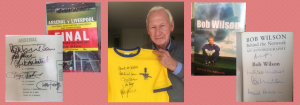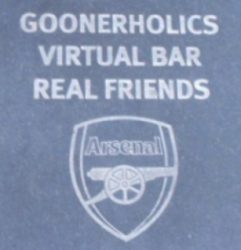
Injuries and red cards caught up with us today as a poor performance led to a one goal loss to West Ham. Despite the paucity of our display, West Ham offered little beyond shape and discipline, so whilst I cannot argue we deserved anything from the game, it would be generous indeed to say the Hammers deserved to win it. This one was no advert for the Premier League.
We spent the first half holding down the pilot light without ever sparking a flame as we just weren’t pumping any gas. Click, click, click, it kept making that annoying sound but, ironically, nothing was clicking for the Gunners.
We had most of the ball and the game was played between midfield and the West Ham third of the pitch – they rarely troubled us. Despite threatening to ignite, all we could manage was a long series of nearly moments, often failing to make the most of promising situations when one good ball would have led to a shooting chance.
Rice needed to be more involved, but he left Trossard and Calafiori to exchange passes on the left wing, both rather scattergun in their final delivery. The Italian volleyed our first shot on target after thirty-five minutes. When the ball recycled to Trossard he swung a deep cross over everybody, which was typical on the day. Ødegaard was poor all game. One of his worst performances in a while and the man who scored fifteen PL goals in a season no longer looks a threat. He failed to look after the ball, misplacing too many passes and hitting one shot which would have been more useful at Twickenham than the Emirates. Norwegian rugby must be rueing his loss.
Nwaneri lost possession the first two or three times he got the ball, but he warmed into the half and looked especially dangerous when he drifted towards the right wing (positionally, not politically). Today was a reminder not to put too much expectation on a young player who needs to develop his consistency.
We need him to forge a connection with the captain and Timber. If the former was in the doldrums, then the latter offered very little. Timber is a player I really like. He has a great attitude and lots of quality. He gets into good positions and keeps the shape of the team. But he offers almost nothing decisive from an attacking perspective. He rarely scores or assists, and that right side has gone from dangerous to toothless. I was keen to see White in the second half as we badly needed overlapping runs to draw a defender away from Ethan.
In the 42nd minute, Merino threaded a lovely ball through to a surging Rice, but the out-of-sorts dynamo failed to pull the ball back and the chance was gone. It was the first of two poor moments in the boxes from him.
After a very quiet attacking performance, West Ham took the lead two minutes later. Ødegaard and Timber lost the ball on the edge of the opposition box and all it took was a couple of quick passes to release Wan-Bissaka in acres of space down our left. He advanced to the byline, did well to get his cross past Calafiori and in front of Raya, where Jared Bowen nodded it home. The England man owed a debt of gratitude to Rice, who had tracked his run for fifty yards, kept his eye on him nicely, and then just slowed up at the critical moment, failing to intercept the cross by a foot. The Irons’ fans had been giving him some stick, so why he thought they deserved this gift was beyond me. It cost us big time. It was an awful goal to concede, and it changed the match. This was the big regret on the day, because even playing badly we could have turned this lot over, but we gave them a goal that we just could not afford to do. 1-0 looked like the only possible winning scoreline if we continued to be so anaemic in attack – we needed to maintain our defensive solidity but we threw it away by failing to do the basics. This team has been worked to the bone and it is tired.
Arteta gave it ten minutes in the second half and hooked Rice and Calafiori for Zinny and MLS. We tried to threaten but it was tough going. Trossard had an effort saved, but we mostly failed to create shooting opportunities and, when we did, we missed the target. Merino tried hard, but his limitations were clear. We’ll see if he starts the next one or goes back to impact sub.
On 70 minutes, MLS and Gabriel played a poor series of passes to each other, inviting pressure, and a heavy touch from the youngster gave Kudus a sniff. They scrapped for the ball on the halfway line, it bobbled through the defender and he brought Kudus down. It could have been given as a foul against Kudus (some days it would be, but we’d have been lucky if it had been) but once Craig Pawson decided it wasn’t, he had a decision to make. He was not exactly sure where the keeper and other defenders had been at the time of the foul and so he made the sensible decision to award a yellow, knowing that VAR would have a look at it. This they duly did, and we can have no complaints when it was upgraded to a red. Our distribution was sloppy all day (only Partey got a pass from me on his usage of the ball) and it was our own fault we got caught. MLS had to bring Kudus down to prevent a goal, and the rest is history.
The thing is, even with 10 men, if we had twenty minutes to score a single goal to win the game then the Ems would have been rocking and the pressure on (it’s easy to say I told you so, but that’s also the time I’d have liked to see Merino enter the fray up top). Instead, we knew we had to score two, as even a point didn’t feel like enough, and (watching on tv) the atmosphere felt like no-one expected us to get the two goals we needed. Ødegaard tried to rouse the crowd with his arms, but his feet were not on the same page. With everyone in the box he played a six-yard pass to Saliba, who wasn’t expecting it (neither was anyone else, it was a terrible decision) and passed it back to Raya in an uncharacteristic flap.
We brought White on with five minutes to go, and despite having Merino and Gabriel to aim at, we refused to cross the ball from wide positions. Remember the Inter game where we swung 376 crosses at our smallest players? Well, this was the reverse. We ignored our biggest lumps and fannied about on the edge of the box.
Eight minutes of injury time roused the crowd but the best chance fell to a breaking Ferguson and Kudus. They took a leaf from our book though and messed it up without getting a shot off.
With the home faithful baying for an equaliser, we had a last corner. Raya went up but it was cleared. Our keeper outsprinted some West Ham lad to the halfway line and backheeled the ball skilfully past him to get us going again. It was probably the best thing we did all day.
So, the chance to catch up points on Pool was wasted. I am sure there will be lots of opinions about how much this result might cost us, and it is a bit too close to the action for me to throw my two cents in. I just don’t know. We will see how it plays out.
I did not like the balance of the team and there were too many poor performances. Hopefully Arteta will have learned a few things as he seeks to redeploy his scarce resources as effectively as he can for a few more games. Saka and Gabigol cannot come back quickly enough.
The thought I want to end with is that we have had a lot of injuries and a lot of bad luck this season. Our squad is not big enough. But the players on the pitch, those very same players who were not good today, gave it their all. They worked hard for the badge, they deserved the support they got from an excellent crowd, and I cannot ask more than that.
This one hurt us as fans. It will have hurt them as players. We are hurting together. But we will be ready for the next one together too.
Victoria Concordia Crescit.
Until next time, ‘holics.












